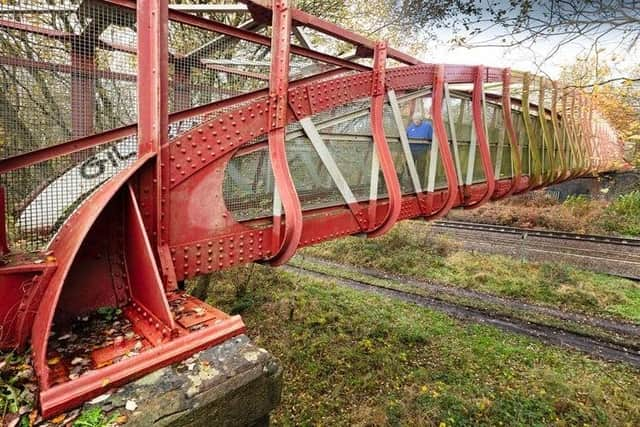Wigan railway footbridge is added to list of historic gems as building of national importance
and live on Freeview channel 276
The Deep Pit railway footbridge in Hindley is among 16 historic gems around the country which have been added to the National Heritage List for England.
This means the Victorian-era footbridge is of special architectural or historic interest and considered to be of national importance.


Advertisement
Hide AdAdvertisement
Hide AdThis unusually long, single-span, wrought-iron pedestrian railway footbridge is situated off Highfield Road and dates from 1887.
It was built during the peak period of railway bridge construction and once spanned nine tracks, with a large ramp on the south side rather than steps leading up to it. It has survived with minimal alteration, and its architectural interest lies in its elegant design.
The footbridge was originally built to cross the line of the Liverpool and Bury Railway. The line was already laid out by 1846 but was not opened until November 1848, by which time it had become part of the Manchester and Leeds Railway, and then part of the Lancashire and Yorkshire Railway (LYR), which was incorporated in 1847.
In July 1885 it was decided to widen the line here, under the resident engineer Augustus Topp. Topp probably designed the Hindley footbridge and it was wrought and built by Walker Bros who were founded in 1866 and moved to Pagefield foundry in Wigan in the 1870s.
Advertisement
Hide AdAdvertisement
Hide AdThe bridge serves a footpath which in the 1840s linked various local coal mines. Hindley Deep Pits to the north of the railway closed in 1891, while Ladies Lane colliery closed in 1908. The LYR became part of a newly-incorporated London and North Western Railway in 1922, which was almost immediately subsumed within the London Midland and Scottish Railway in 1923, before finally becoming part of British Railways upon nationalisation in 1948.
The bridge historically carried signalling equipment, which was removed after signalling rationalisation in 1972.
Duncan Wilson, chief executive of Historic England, said: “A range of remarkable historic buildings and sites are added to the list each year and 2023 is no exception.
“We’ve examined and protected some amazing sites this year, which together give us a window into our rich and varied historic environment.”
